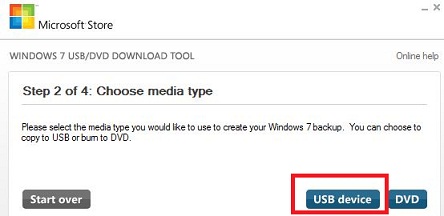

- #CREATE WINDOWS 7 BOOT USB ISO MANUAL#
- #CREATE WINDOWS 7 BOOT USB ISO UPGRADE#
- #CREATE WINDOWS 7 BOOT USB ISO PORTABLE#
- #CREATE WINDOWS 7 BOOT USB ISO PC#
You can recognise your USB by its storage capacity, and it’s usually listed as “disk 1”.Enter the command “ list disk” to display all available storage devices.Type the command “ diskpart” and confirm your input with the enter key (you’ll also do this after every other entered command).This opens a small window with white text on a black background. Search for the “ cmd” application in the Windows start menu, right-click on the item, and select “ Run as administrator” from the context menu.Plug the USB drive into your computer’s USB port.If you dare to do the necessary work by hand, you can simply use the cmd.exe application, better known as “Command Prompt”, to create a bootable USB drive on all operating systems from Windows Vista (including Windows 10). Downloading directly from the company’s website is also possible for Windows 7 and Windows 8, for example.
/001_how-to-install-windows-7-from-usb-2626264-5c7478a7c9e77c00011c8249.jpg)
In the case of Windows 10, this can be done completely legally via the media creation tool from Microsoft. But it’s simpler to just download the required operating system from the internet. You can create such an ISO file yourself, though, for example with the use of tools like WinISO, UltraISO, or the burn program InfraRecorder.
#CREATE WINDOWS 7 BOOT USB ISO PC#
Today, Windows is generally preinstalled on a system partition of a matching PC or laptop. These files used to be found on a CD- or DVD-ROM, which came with a new computer or could be acquired separately.
#CREATE WINDOWS 7 BOOT USB ISO PORTABLE#
To obtain a high working speed (or enable the creation of a portable operating system), the selected drive should support the standard USB 3.0.

A USB drive with at least 4GB of storage (for a 32-bit operating system) or at least 8GB (for a 64-bit system).The Windows utility program DiskPart or an external tool with the same functions.Regardless of which option you choose, you always need the following things:
#CREATE WINDOWS 7 BOOT USB ISO MANUAL#
The first option seems a bit complicated at first glance, and because of the various manual steps is slightly more error-prone, but it’s still doable even if you’re not an expert. There are basically two possible methods: either manually or using automated tools. Use a “portal operating system” on a foreign computerĪ bootable USB drive can of course be created on a different computer than the one you want to use it on later.“Clean” reinstallation of the operating system.
#CREATE WINDOWS 7 BOOT USB ISO UPGRADE#


 0 kommentar(er)
0 kommentar(er)
